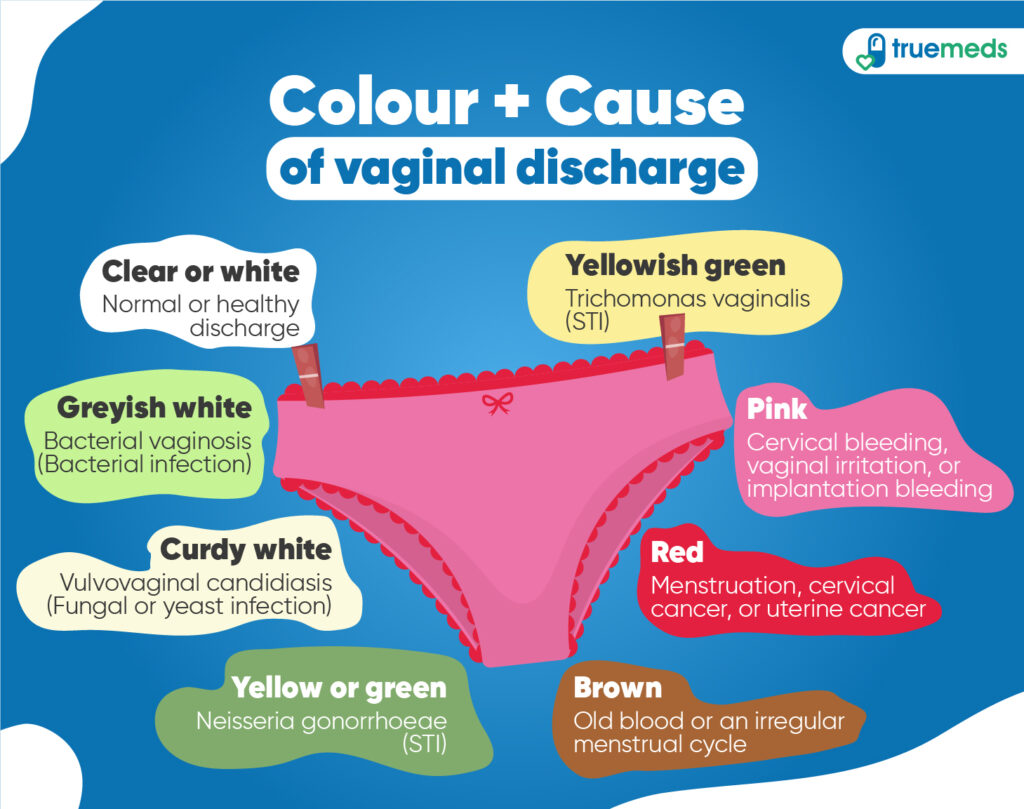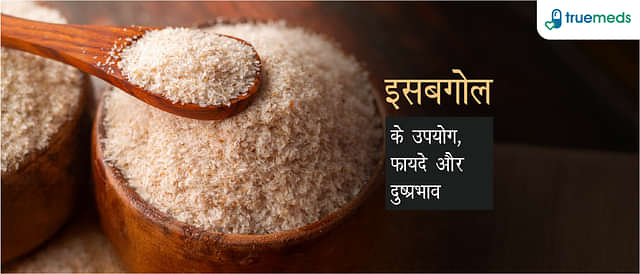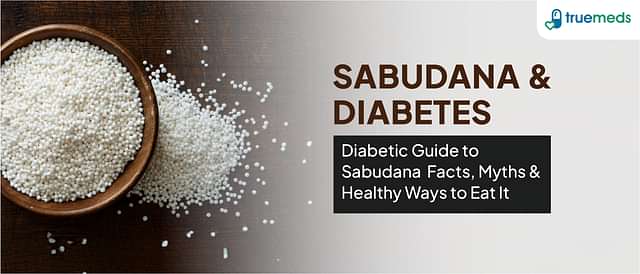Understanding Vaginal Discharge: Causes, Colors, and Treatments
Last updated on : 02 Aug, 2024
Read time : 12 min
Vaginal discharge is the clear, white, or off-white fluid released from the vagina. It carries away dead cells and bacteria, helping to keep the reproductive system clean. It is a natural process and an essential aspect of a woman’s reproductive health. It helps maintain the vagina’s cleanliness and protects it against infections.
It may vary in colour, consistency, and odour, indicating underlying health conditions. But which colour, consistency, and odour is normal and which is alarming can be a question of concern. A normal vaginal discharge does not cause itching, redness, and swelling and is generally odour free. If your discharge is showing unusual symptoms and odour, it can indicate any underlying infection, health condition, or an unhealthy lifestyle.
Is it Normal to have vaginal discharge?
Vaginal discharge is a natural process, and it is absolutely normal to have it. White vaginal discharge without a foul smell is commonly experienced during pregnancy or sexual arousal due to hormonal changes. During arousal and intercourse, increased blood flow and hormonal changes can influence the amount and consistency of vaginal secretions. Additionally, certain contraceptives, such as hormonal birth control methods, may alter the vaginal environment, affecting the normal vaginal discharge.
This discharge helps protect the reproductive organs and prevent infections. Vaginal discharge throughout the menstrual cycle is also normal. The consistency, colour, and quantity of discharge can change due to hormonal imbalance or specific health conditions.
The other common conditions where vaginal discharge is expected include:
- Use of Tampons: A tampon stuck between the cervix and vagina can also cause vaginal discharge.
- Atrophic vaginitis: It is a post-menopausal condition that causes the vagina to be dry and thin than usual.
- Cervical ectropion: It is a common gynaecological condition that causes the vaginal discharge.
- Vulval dermatitis: it is the condition when the vulva, the soft folds of skin around the opening of the vagina, becomes inflamed and itchy.
- Allergic reaction: Any allergic reaction from non-medicated soaps, detergents, genital sprays, ointments, contraceptive jellies, foams, or creams.
What are the different types of vaginal discharge?
There are 2 types of vaginal discharge:
1. Normal discharge
The vaginal discharge is normal when it is clear or milky with slight or no odour. It is thick and has sticky consistency that keeps the vagina bacteria-free. The black vaginal discharge after periods is also expected. When blood is in the uterus after the menstrual cycle for an extended period, it undergoes oxidation, resulting in a brownish to dark brown or black hue.
2. Abnormal discharge
The vaginal discharge is abnormal when it is dark yellow, grey, or green with a thick consistency and a foul smell. It may be an alarming sign of a bacterial infection or an underlying disease. It may cause itchiness, soreness around the vagina, and painful urination. The pink or red discharge before periods is also considered abnormal. It can be indicative of cervical bleeding, vaginal irritation, or implantation bleeding.

Colour of Vaginal Discharge and Its Causes
The color of vaginal discharge can vary and often indicates different health conditions. Clear or white discharge is normal, while yellow, green, or gray discharge may signal infections. Brown or bloody discharge can occur around menstruation or signal other issues. Identifying these colors helps in understanding potential causes. The following table describes different vaginal discharge and their causes.
| Colour of vaginal discharge | Cause of vaginal discharge |
| Clear or white | Normal or healthy discharge |
| Curdy white | Vulvovaginal candidiasis (Fungal or yeast infection) |
| Greyish white | Bacterial vaginosis (Bacterial infection) |
| Yellow or green | Neisseria gonorrhoeae (STI) |
| Yellowish green | Trichomonas vaginalis (STI) |
| Pink | Cervical bleeding, vaginal irritation, or implantation bleeding |
| Red | Menstruation, cervical cancer, or uterine cancer |
| Brown | Old blood or an irregular menstrual cycle |
Which infections cause vaginal discharge?
Abnormal vaginal discharge can occur due to various infections as well. These include:
Non-Sexually Transmitted Infections
- Bacterial vaginosis: The abnormal vaginal discharge due to bacterial infection can cause fish-smelling discharge. It is usually without itch or soreness. The discharge consistency is thin and is of either grey or white colour.
- Vulvovaginal candidiasis: The abnormal vaginal discharge due to fungal or yeast infection. It is usually with itch, soreness, and causes curdy white vaginal discharge, which does not usually smell.
Sexually Transmitted Infections
- Chlamydia trachomatis: It is a bacteria that can transmit through vaginal, oral and anal sex. In postpubertal women, it infects the endocervix instead of the vagina. It leads to cervical discharge, which seems as if it is a vaginal discharge with pelvic pain or vaginal bleeding.
- Neisseria gonorrhoeae: It is a sexually transmitted disease marked by an abnormal yellow or green vaginal discharge that may be thin or watery, purulent (containing pus), and with mild odour.
- Trichomonas vaginalis: It is a parasitic infection that causes the abnormal vaginal discharge. It may be thick, thin, or frothy and yellowish-green in colour. This infection may produce more discharge than usual, which may also have an unpleasant fishy odour. You can also experience soreness, swelling, and itching around the vagina and inner thighs.
- Herpes simplex virus (HSV): It is a sexually transmitted virus that causes genital herpes. It also causes abnormal vaginal discharge having a fishy odour with painful blisters and ulcers around the genitals.
In some cases, cancer of the vagina, cervix, uterus, or fallopian tubes can also be the cause of abnormal vaginal discharge. Therefore timely diagnosis of any abnormality in vaginal discharge is recommended.
Read more: Vaginal Boils
What is the difference in vaginal discharge before and after periods?
Vaginal discharge can vary throughout the menstrual cycle due to hormonal changes. The vaginal discharge before periods is of more stretchable consistency and transparency. This results from increased estrogen levels, preparing the body for pregnancy. During periods, it is blood red during the first five days. After periods, the discharge may become thicker and cloudier. The post-menstrual discharge is a combination of cervical mucus and vaginal secretions. These variations are entirely normal and occur due to the body’s natural hormonal changes during different menstrual cycle phases. Any unusual changes or abnormalities in discharge before or after periods should be brought to a doctor’s notice for further evaluation.
When to seek treatment for vaginal discharge?
You must seek medical treatment if there is excessive vaginal discharge accompanied by a foul odour or unusual colour, predominantly dark yellow, grey, or green. Also, you should report to a doctor if your symptoms get worse or persist over a week. Additionally, you should be cautious if there is persistent itching, soreness, swelling, pain during urination, or discomfort during sex. If you experience fever or pain in your pelvis or belly area along with the symptoms mentioned above, it is advisable to see a doctor. Prompt medical attention ensures timely diagnosis and appropriate treatment for any underlying infections.
Read more: Effective Home Treatments for Vaginal Boils
How to treat vaginal discharge?
The vaginal discharge treatment usually depends on the underlying cause. Your doctor may prescribe antibiotics or antifungals based on the type of infection. It’s crucial to have the vaginal discharge accurately diagnosed to get the treatment plan accordingly.
Some medication options for vaginal discharge
- Metronidazole: It is an oral antibiotic for treating bacterial vaginosis and trichomonas vaginalis.
- Cefixime (oral) and ceftriaxone (intramuscular): These antibiotics are used to treat gonorrhoea.
- Fluconazole: It is an oral antifungal for the treatment of vulvovaginal candidiasis.
- Doxycycline and azithromycin: These are the antibiotics taken to treat Chlamydia trachomatis.
- Vaginal imidazole preparations: These are antifungal medications used for the treatment of vulvovaginal candidiasis.
- Intravaginal clindamycin cream (2%): It is an antibiotic applied topically for treating bacterial vaginosis.
- Intravaginal metronidazole gel (0.75%): This gel is also used to treat bacterial vaginosis.
- Corticosteroids and antihistamines: These are oral antihistamines used to reduce itching.
Home remedies for vaginal discharge
- Cold compression to reduce itching, swelling, and irritation.
- Avoid sexual intercourse until the irritation subsides.
- Maintain genital hygiene with mild, fragrance-free soap.
- Wear cotton underwear, and avoid tight garments.
- Use pads and not tampons during infection.
- Avoid douching. It may worsen the symptoms by removing healthy bacteria from the vagina.
- Keep your genital area clean and dry.
- Try to change sweaty undergarments immediately to prevent aggravation of infections.
How to keep the vagina healthy?
Here are some essential practices you can follow in your routine to ensure a healthy and balanced vaginal environment:
- Practice safe sex consistently by using condoms to prevent the transmission of infections.
- Learn the correct method for cleaning the genital area during baths or showers.
- After using the toilet, wipe from front to back.
- Wash thoroughly before and after using the bathroom.
- Use plain water to wash the areas around your vagina.
Understanding vaginal discharge is crucial for maintaining a good reproductive health. While normal discharge is also important as it is a sign of a healthy reproductive system, any abnormality may indicate an underlying health condition. In such cases, seeking prompt medical attention is essential to promptly diagnose and treat infections or other conditions. Besides, prioritising vaginal health through proper hygiene, safe sex practices, and other preventive measures can ensure sound reproductive health.
Frequently Asked Questions
White vaginal discharge can have various causes. In many cases, it’s a normal part of a woman’s reproductive health. Normal discharge maintains vaginal moisture. Increased discharge during the ovulation phase of the menstrual cycle, sexual arousal, and pregnancy are common. However, a thick, white, cottage cheese-like discharge may indicate a yeast infection. Additionally, bacterial infection due to bacterial vaginosis can also cause white discharge.
White vaginal discharge can be controlled by maintaining good hygiene practices. Wear breathable cotton underwear and avoid tight clothing to promote air circulation. Avoid douching, and keep your vagina clean and dry. Avoid sexual intercourse if you experience abnormal vaginal discharge. If excessive vaginal discharge occurs, followed by a foul smell and other symptoms, consult a doctor for proper diagnosis and guidance on potential underlying causes.
White discharge is not necessarily indicative of menstruation. There occurs an increased discharge in the menstrual cycle. It may be present before, after, or between menstrual periods. It can be indicative of other conditions, such as bacterial or fungal infection.
Normal vaginal discharge may have a mild odour, but a smelly vaginal discharge may indicate an infection. Common infections like bacterial vaginosis or yeast infection can cause changes in odour. If there’s a persistent unpleasant smell, it’s advisable to consult a doctor for proper diagnosis and treatment.
A small to moderate volume of vaginal discharge is considered normal. However, the amount of normal vaginal discharge varies among individuals. Significant changes in colour, consistency, or smell may indicate an abnormal discharge and should be brought to the notice of a doctor.
Brown vaginal discharge can be expected at the beginning or end of menstruation. It may also indicate old blood or an irregular menstrual cycle. Persistent brown discharge should be discussed with a doctor for proper evaluation.
Vaginal discharge is a normal part of female reproductive health, produced to maintain moisture and cleanliness in the vagina. It can vary in consistency and amount based on factors like hormonal changes, sexual activity, or the menstrual cycle. If the discharge has an abnormal colour, is excessive, or is followed by a foul smell, it may be due to an underlying infection.
Increased cervical mucus may be experienced during early pregnancy. However, vaginal discharge alone is not a definitive indicator of pregnancy. Other symptoms and a pregnancy test are more reliable in confirming pregnancy.
White curdy discharge without itching is usually a sign of a mild yeast infection or an imbalance in the vaginal flora. It may resolve on its own or with minor lifestyle adjustments, such as improving hygiene or wearing breathable underwear.
To get rid of white cottage cheese-like discharge, you can use over-the-counter antifungal medications like creams or suppositories. Maintaining good hygiene, avoiding scented products, and wearing loose, breathable clothing can also help prevent and treat this condition.
White chunky discharge often indicates a yeast infection. This type of discharge is typically thick and resembles cottage cheese. It’s usually accompanied by other symptoms like itching, burning, or irritation, but it can sometimes occur without these symptoms.
The best medicine for white discharge caused by a yeast infection includes over-the-counter antifungal treatments like clotrimazole, miconazole, or prescription medications such as fluconazole. It’s important to consult a healthcare provider for an accurate diagnosis and appropriate treatment.
Disclaimer
Our healthcare experts have carefully reviewed and compiled the information presented here to ensure accuracy and trustworthiness. It is important to note that this information serves as a general overview of the topic and is for informational purposes only. It is not intended to diagnose, prevent, or cure any health problem. This page does not establish a doctor-patient relationship, nor does it replace the advice or consultation of a registered medical practitioner. We recommend seeking guidance from your registered medical practitioner for any questions or concerns regarding your medical condition.
Popular Articles
Recommended Articles
Recent Articles
Top-Selling Medicines:
Top-Selling OTC:
...View more
Subscribe
Registered Office Address
Grievance Officer
Download Truemeds

Contact Us
Our customer representative team is available 7 days a week from 9 am - 9 pm.
v3.7.5
Our Payment Partners


























































